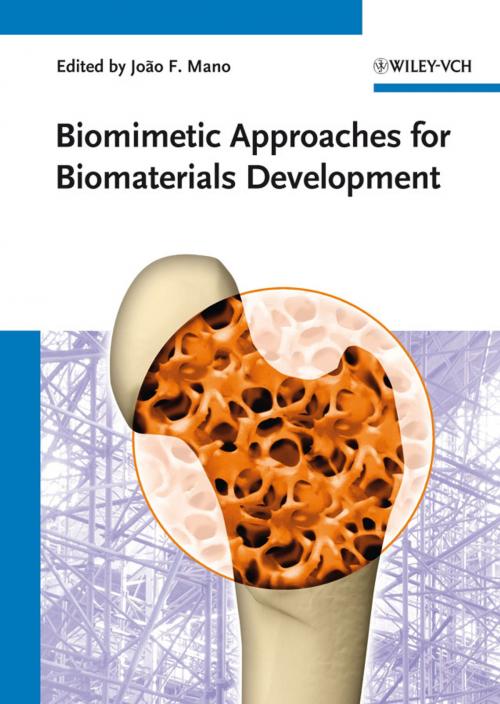Biomimetic Approaches for Biomaterials Development
Nonfiction, Science & Nature, Science, Biological Sciences, Biotechnology| Author: | ISBN: | 9783527652297 | |
| Publisher: | Wiley | Publication: | February 8, 2013 |
| Imprint: | Wiley-VCH | Language: | English |
| Author: | |
| ISBN: | 9783527652297 |
| Publisher: | Wiley |
| Publication: | February 8, 2013 |
| Imprint: | Wiley-VCH |
| Language: | English |
Biomimetics, in general terms, aims at understanding biological principles and applying them for the development of man-made tools and technologies. This approach is particularly important for the purposeful design of passive as well as functional biomaterials that mimic physicochemical, mechanical and biological properties of natural materials, making them suitable, for example, for biomedical devices or as scaffolds for tissue regeneration.
The book comprehensively covers biomimetic approaches to the development of biomaterials, including: an overview of naturally occurring or nature inspired biomaterials; an in-depth treatment of the surface aspects pivotal for the functionality; synthesis and self-assembly methods to prepare devices to be used in mineralized tissues such as bone and teeth; and preparation of biomaterials for the controlled/ sustained release of bioactive agents. The last part reviews the applications of bioinspired materials and principles of design in regenerative medicine such as in-situ grown bone or cartilage as well as the biomimetic techniques for soft tissue engineering.
The comprehensive scope of this book makes it a must-have addition to the bookshelf of everyone in the fields of Materials Science/Engineering, Nanotechnologies / Nanosciences, Medical Sciences, Biochemistry, Polymer Chemistry, and Biomedical Engineering.
Biomimetics, in general terms, aims at understanding biological principles and applying them for the development of man-made tools and technologies. This approach is particularly important for the purposeful design of passive as well as functional biomaterials that mimic physicochemical, mechanical and biological properties of natural materials, making them suitable, for example, for biomedical devices or as scaffolds for tissue regeneration.
The book comprehensively covers biomimetic approaches to the development of biomaterials, including: an overview of naturally occurring or nature inspired biomaterials; an in-depth treatment of the surface aspects pivotal for the functionality; synthesis and self-assembly methods to prepare devices to be used in mineralized tissues such as bone and teeth; and preparation of biomaterials for the controlled/ sustained release of bioactive agents. The last part reviews the applications of bioinspired materials and principles of design in regenerative medicine such as in-situ grown bone or cartilage as well as the biomimetic techniques for soft tissue engineering.
The comprehensive scope of this book makes it a must-have addition to the bookshelf of everyone in the fields of Materials Science/Engineering, Nanotechnologies / Nanosciences, Medical Sciences, Biochemistry, Polymer Chemistry, and Biomedical Engineering.















